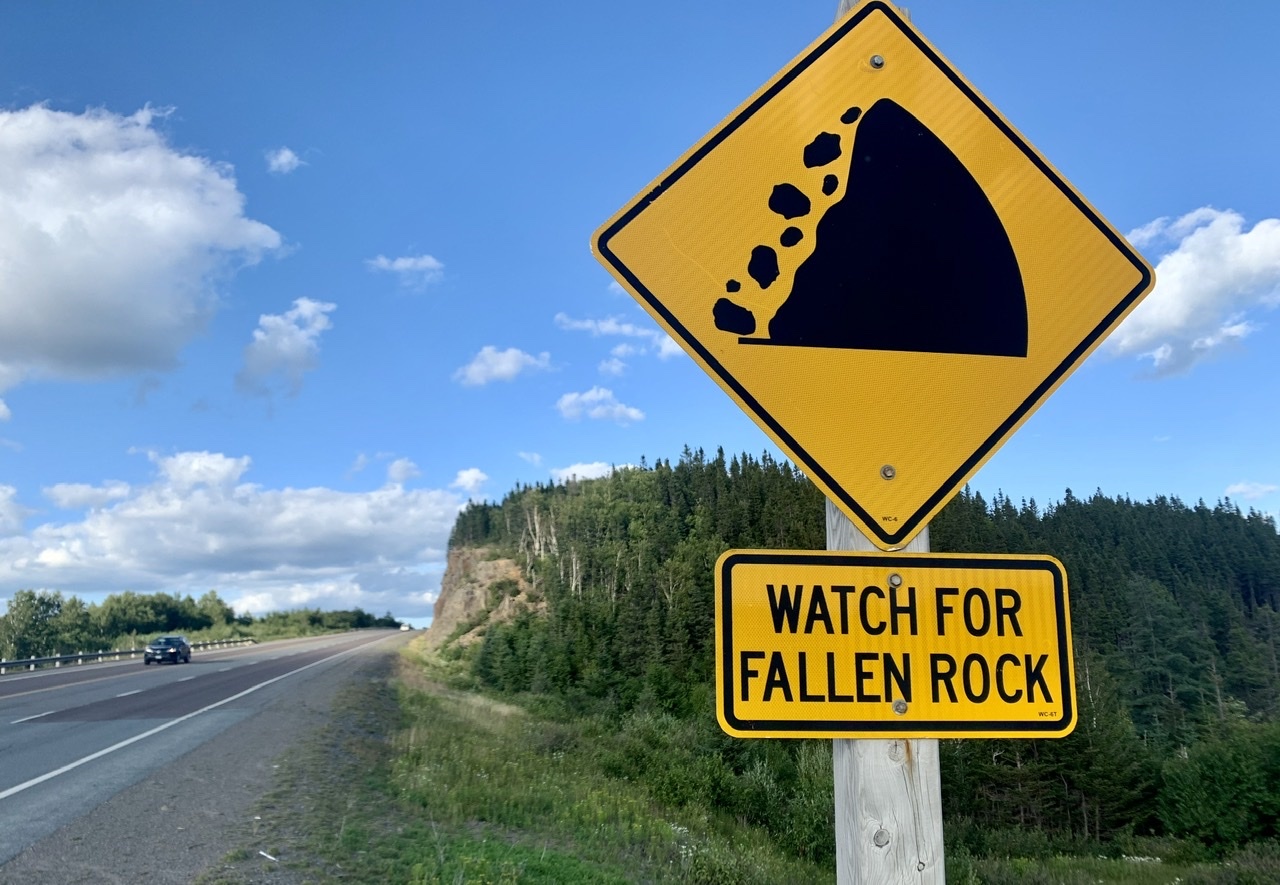
Today was a straightforward, uneventful day of riding. Nothing exciting, nothing unfortunate. It was welcome.
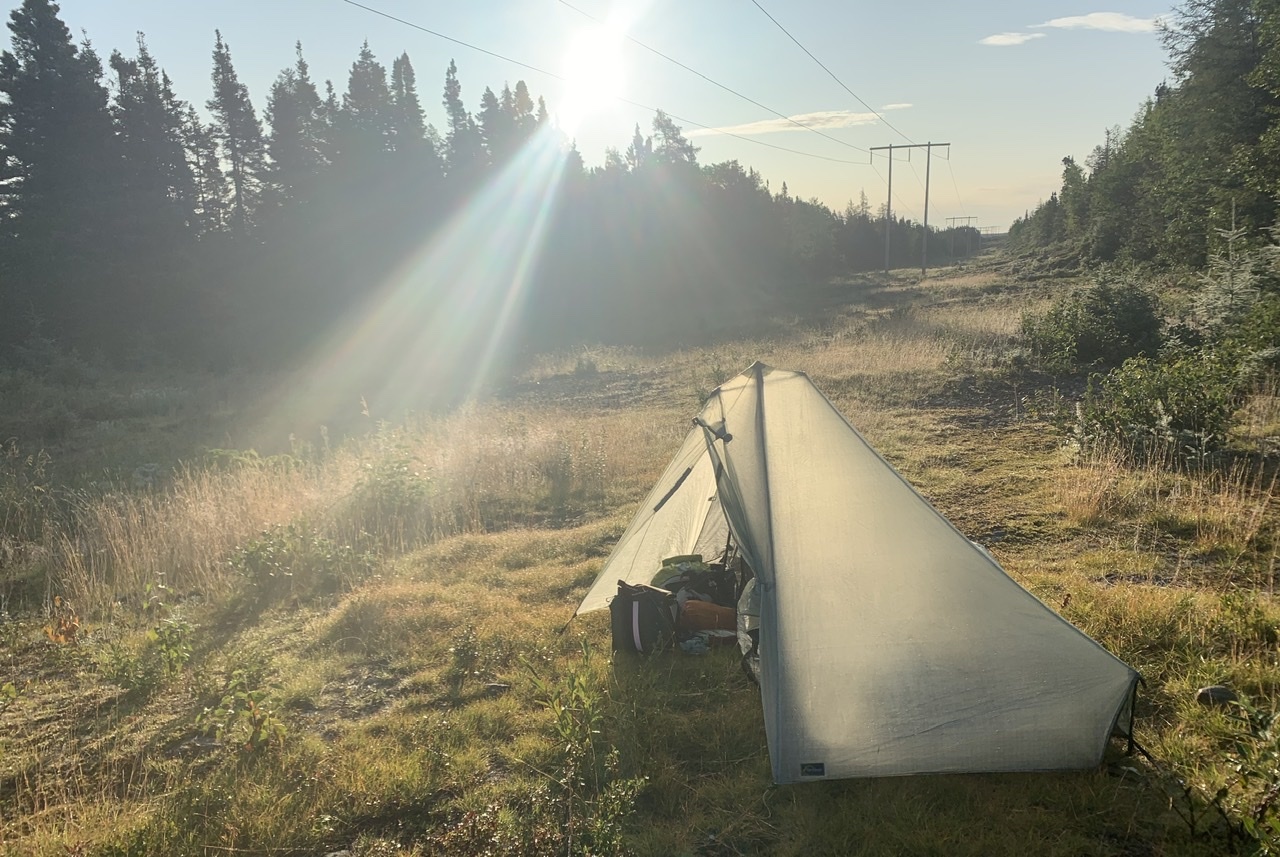
I got up at 7 am, having slept almost 10 hours last night. The winds were quiet when I started riding, but I knew they’d pick up and turn into a headwind so I kept a steady pace, riding all morning, knowing that when I made it to Badger it’d shift direction and turn that headwind in a tail/crosswind. I still had a couple hours of headwind riding, but it was fine compared to yesterday’s all-day slog.
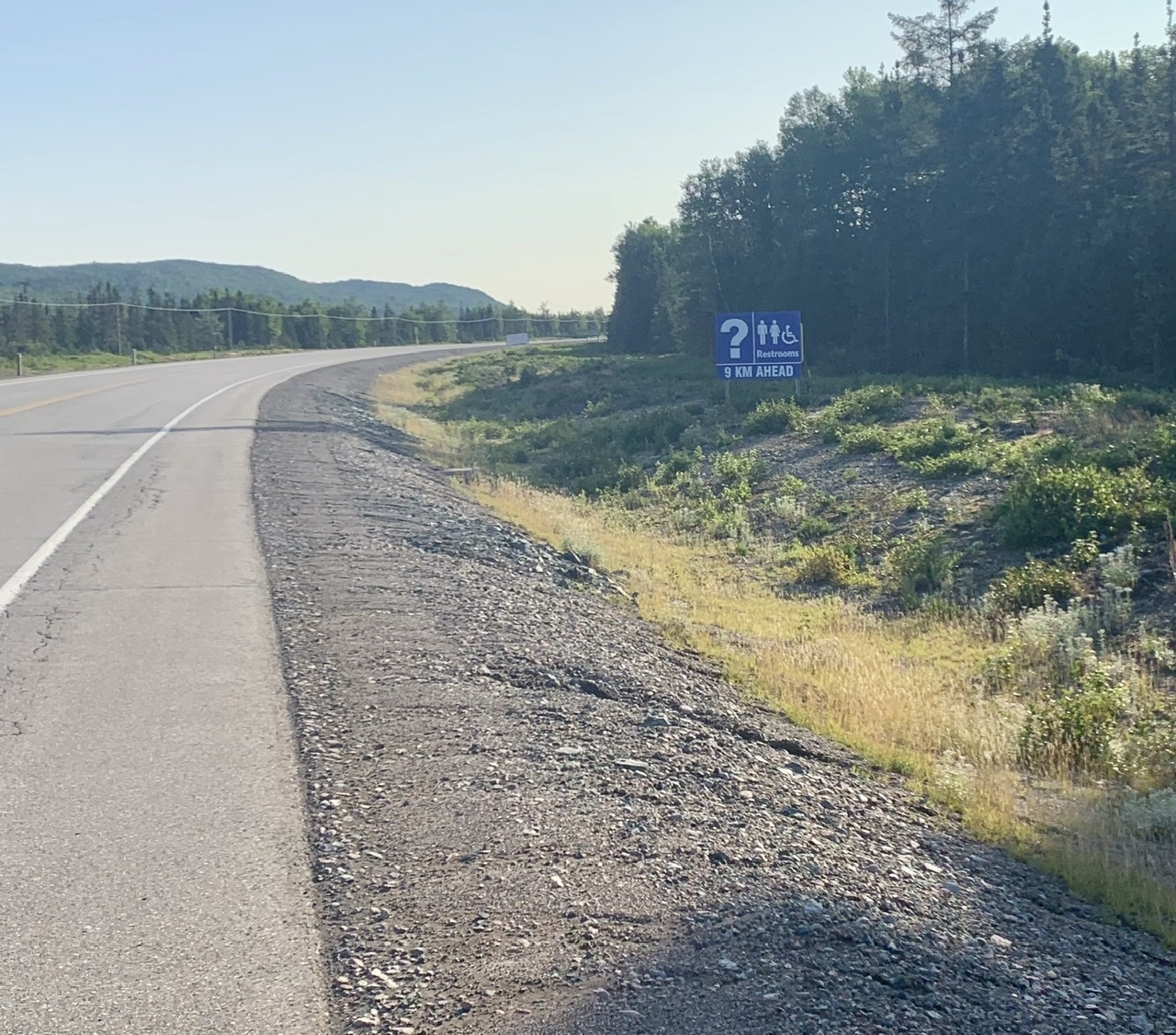

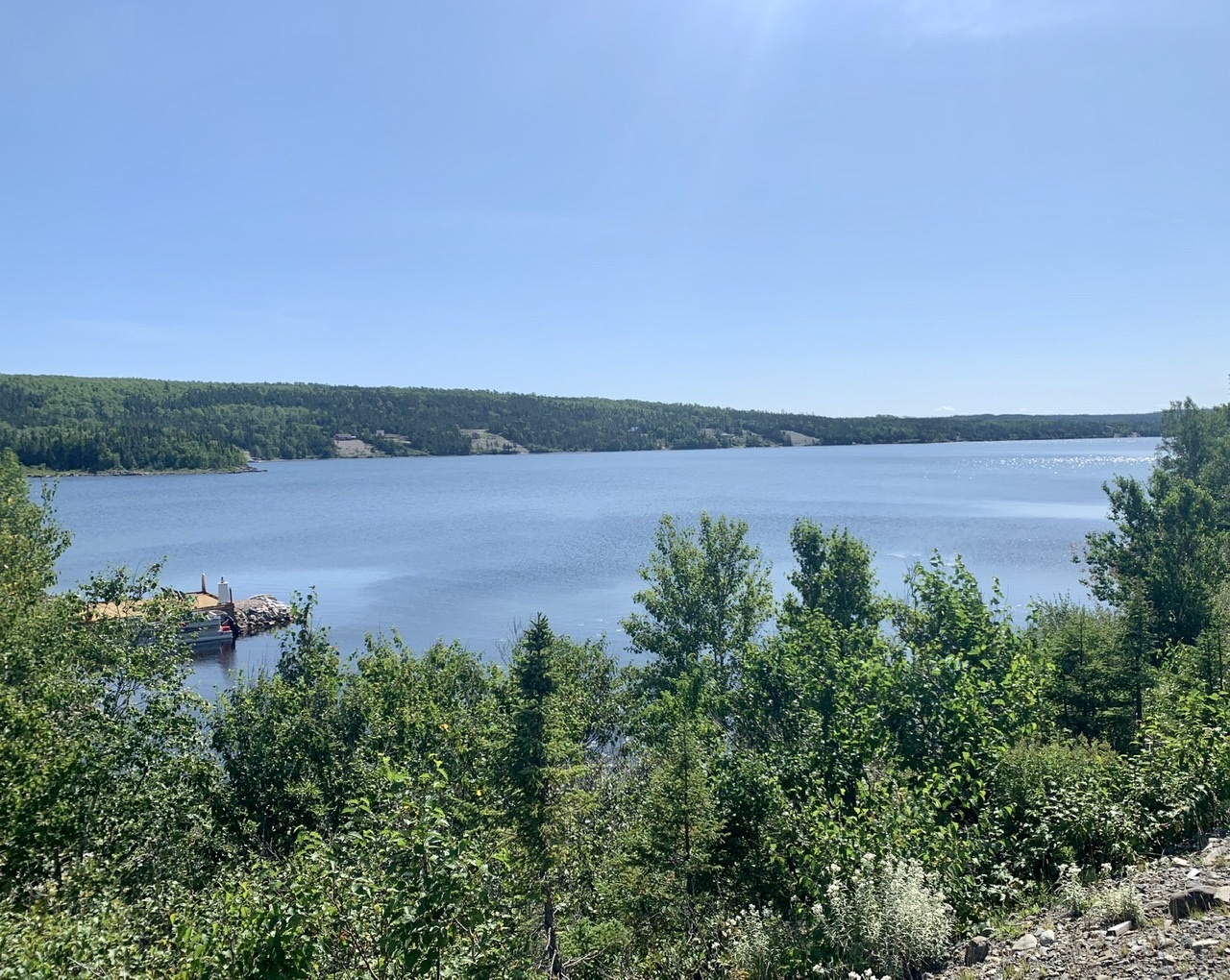
I stopped in Badger around 1:00 to write a blog post, but the Internet connection was too poor to upload it. I pushed on to Grand Falls-Windsor where the magical Internet fairies were much stronger. Mark and I had been texting to see if we could meet up again here, but he went through some sort of whole town power shutoff in Springdale that led to him starting the day late, so we couldn’t make it work.
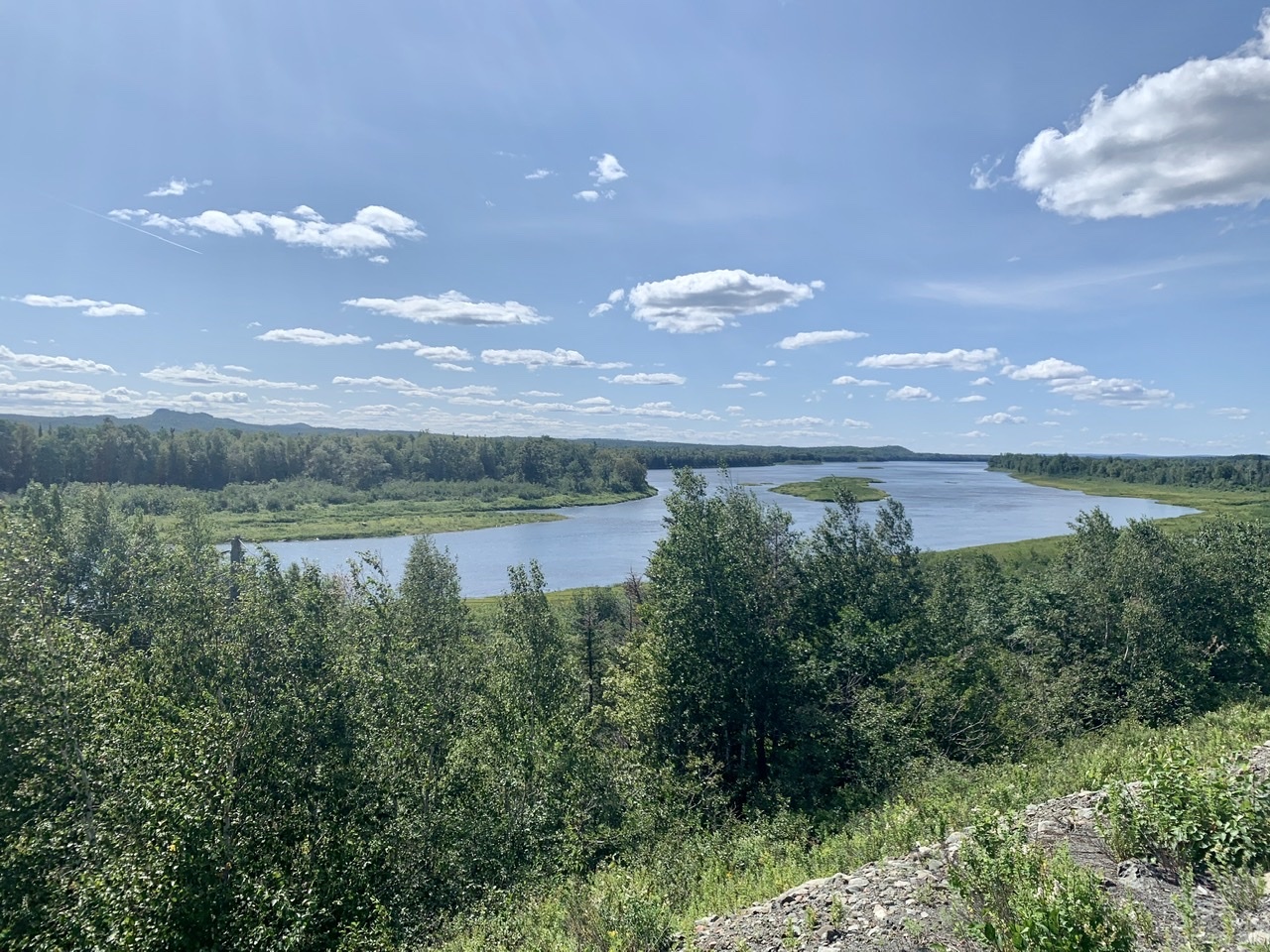
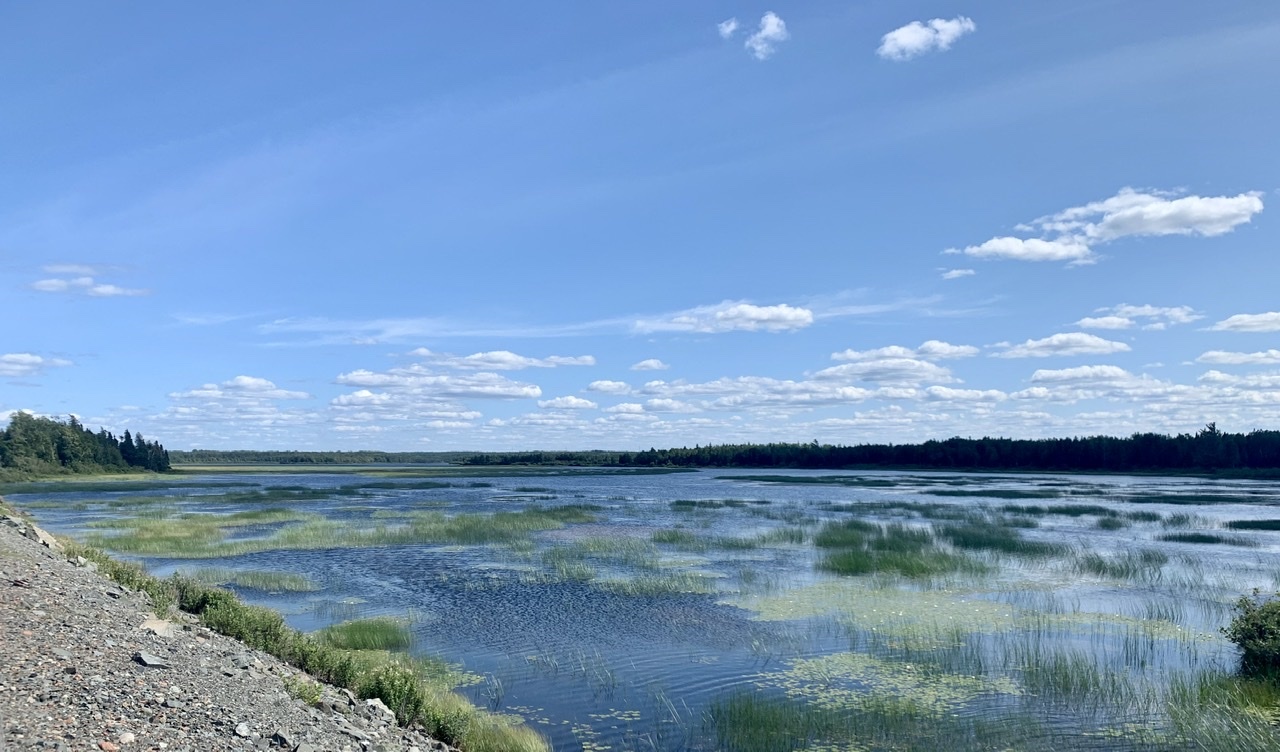
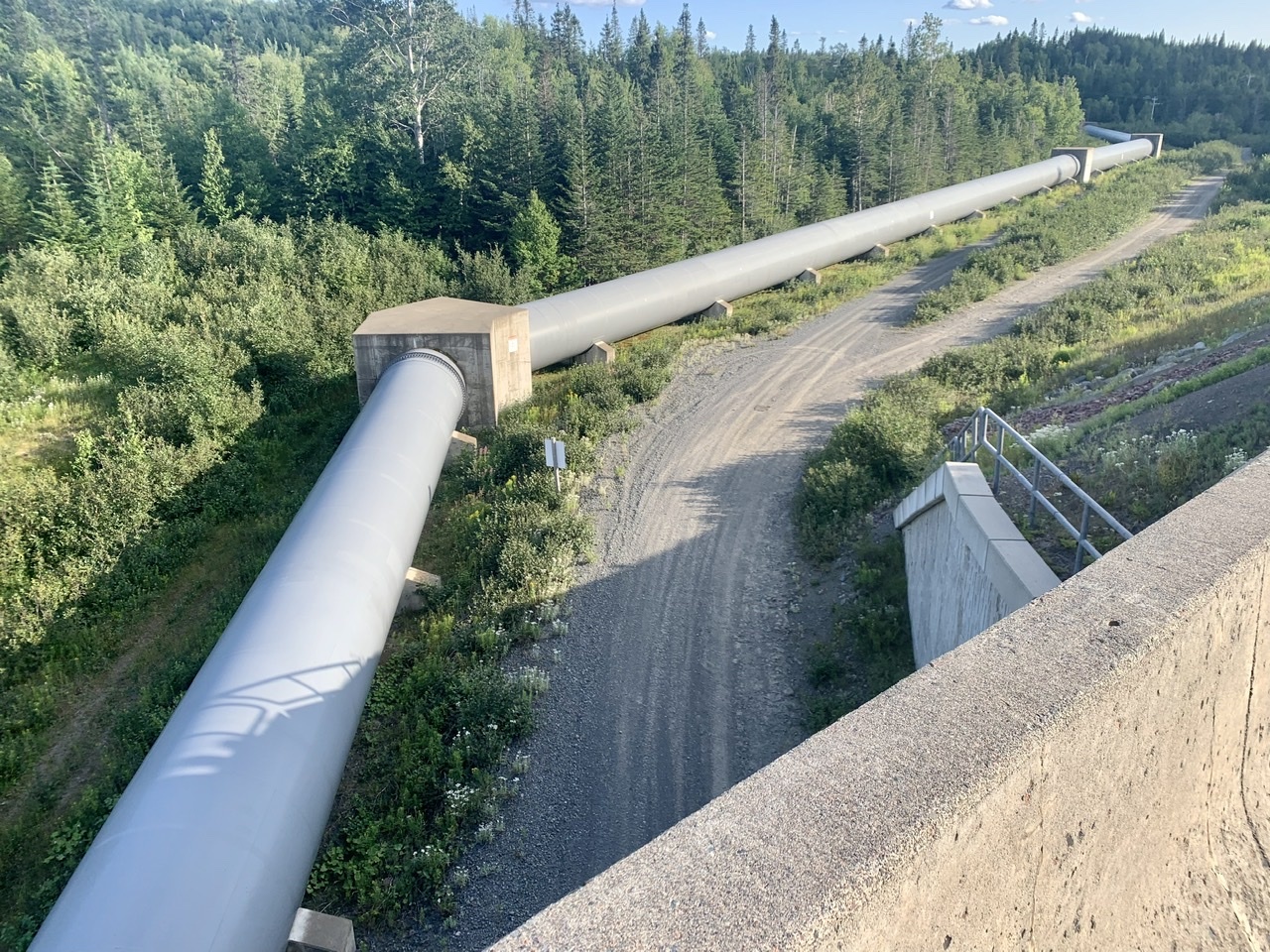
I rode on for a few more hours until I arrived at Notre Dame provincial park. This place was great. A lake (or pond as they call it) to swim in, warm showers, and wooded sites, all for the low price of $20. The only downside was a boil water advisory, but I have a lot of extra fuel to use up before catching a plane home, so I spent some time eating potato chips and calling home while boiling water before heading to bed.
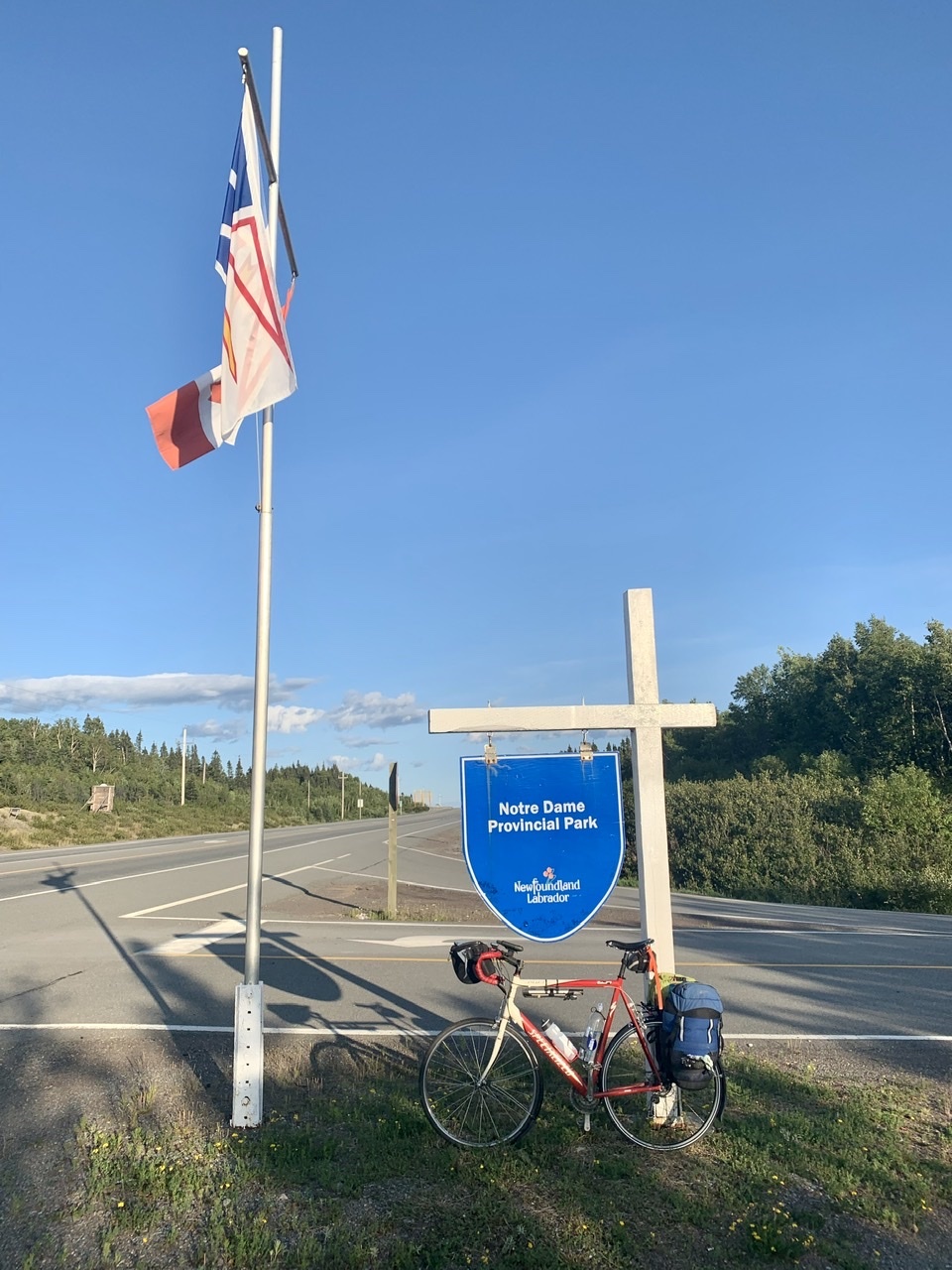
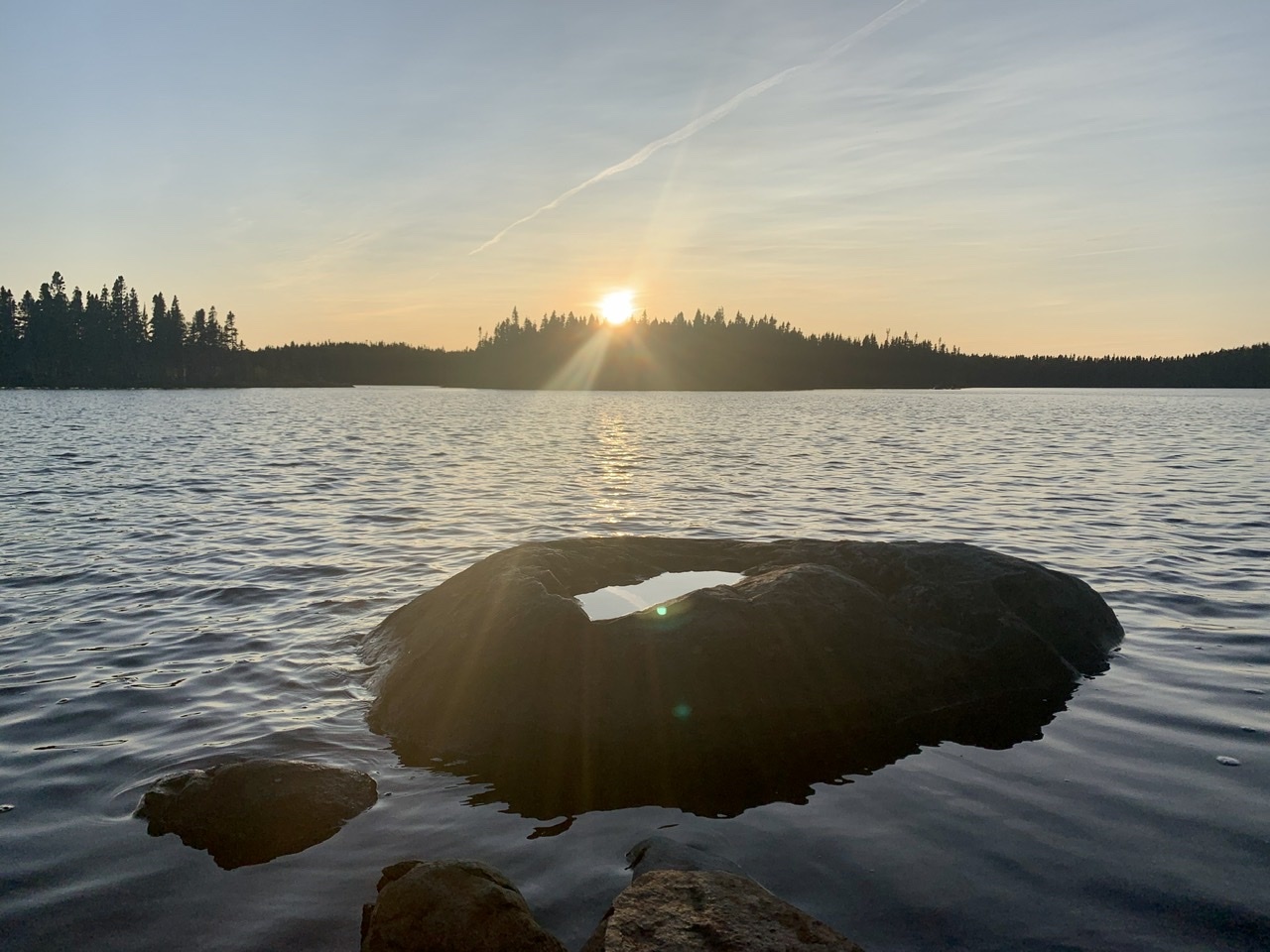
Today’s distance: 159 km
Cumulative distance: 8107 km (I hit 8000 today!)

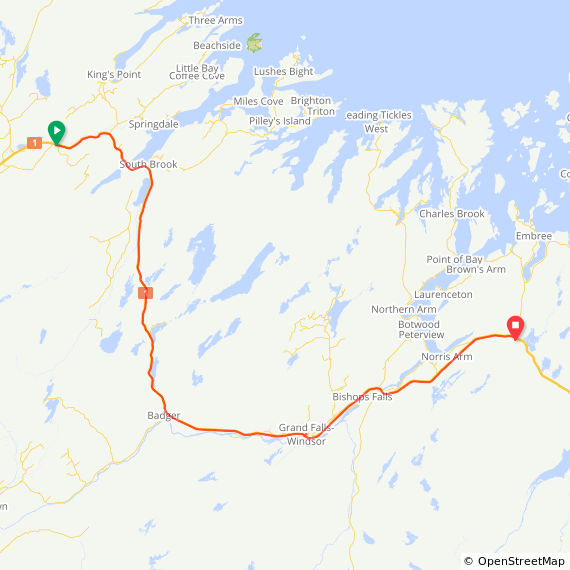
My Gear
I spent a lot of time, effort, and money to get my gear as small and light as possible as I didn’t want to have to carry any more weight than I had to. Back when most of my outdoor excursions involved canoe trips I didn’t have to care so much about weight, but now I do. I also did a backpacking trip in the Grand Canyon last year (where people die every year from overexertion), so used that and this trip as an excuse to buy lighter gear. Most of my gear was 15–20 years old and was due for replacement anyways. I spent a lot of time reading posts on Reddit’s forum for lightweight hiking gear to help me pick out better gear, and I’ve been really happy with what I chose.
My tent
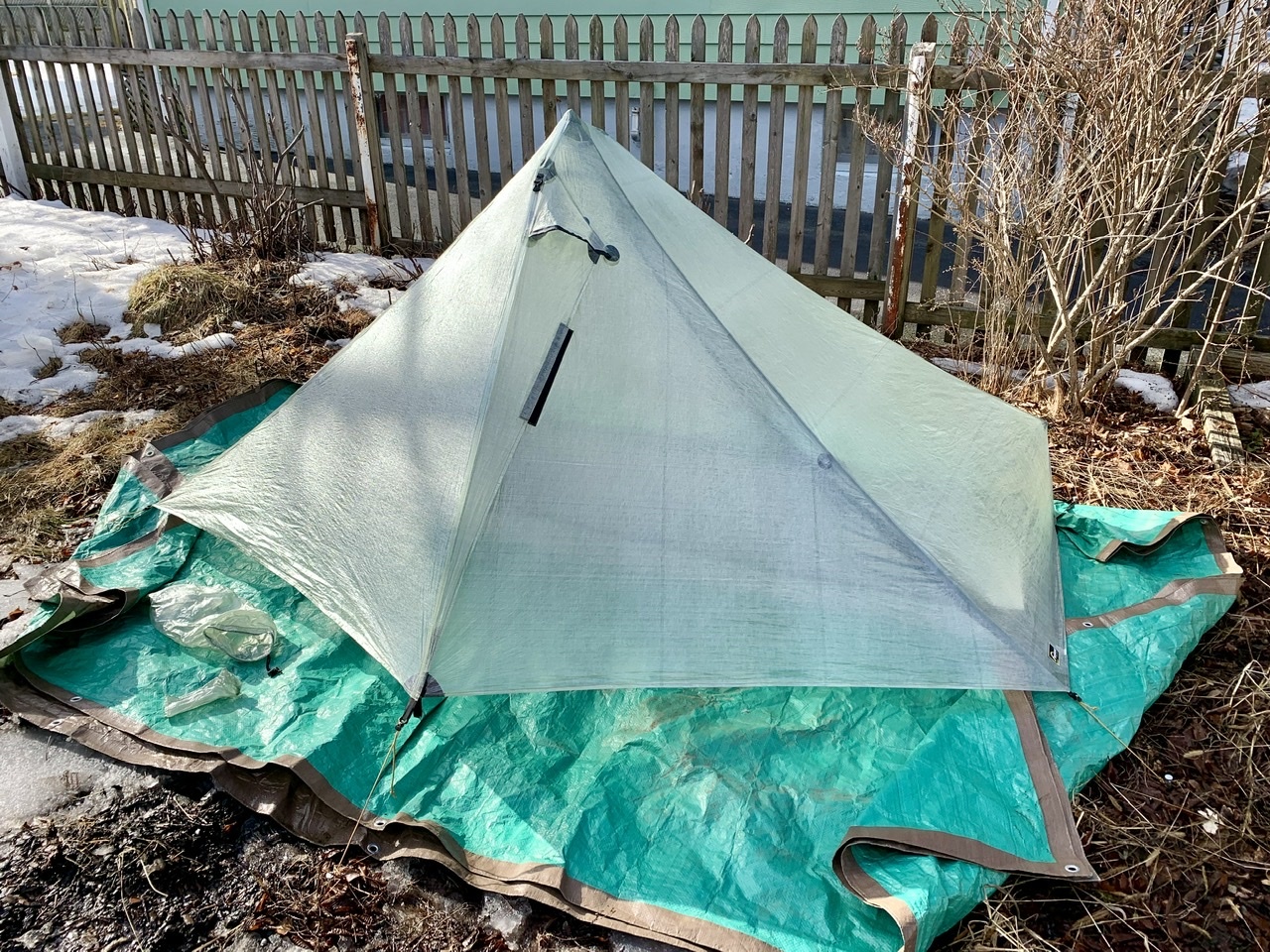
I chose a single-walled Aeon tent from TarpTent, a small tent maker based out of Seattle. It’s made of Dyneema Composite Fibre (DCF), which is also known as cuben fibre. It’s lightness and strength was first used for sailboat sails, but some cottage manufacturers are using it for tents and backpacks. It’s designed to be used with a single hiking pole instead of traditional tent poles. I brought a 48” pole instead of a hiking pole. It has some clever aspects, like corner struts that save on weight while doubling as closable vents. The single-wall construction saves weight, but does mean the inside can get dew condensing on it, which the vents help reduce. I still spend a few minutes wiping down the tent with a rag in the morning so that I don’t pack it away wet, but that’s worth it to me for the weight-savings of not needing a fly. It also makes setting it up and tearing down in the rain better as the inside is kept dry. Most importantly, I can stretch out and sit up in it, and the whole thing weighs just over a pound.
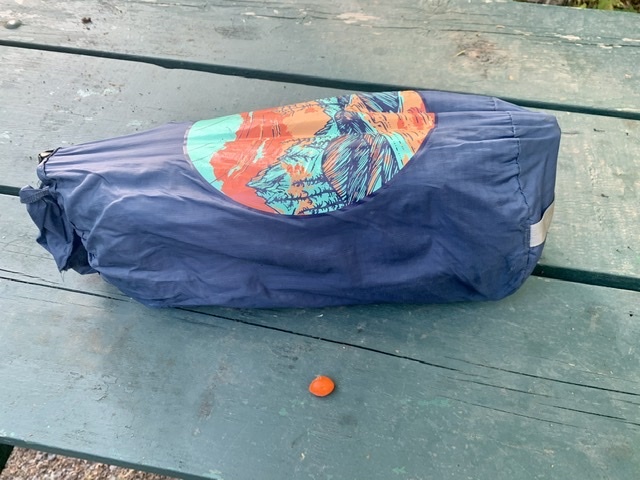

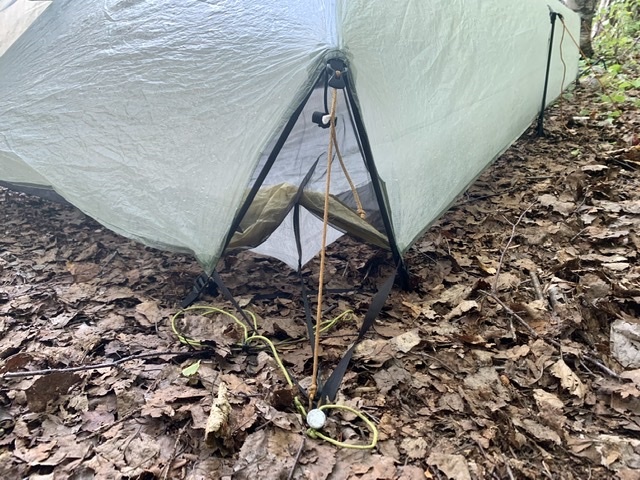
I did make some modifications to it. I added some longer pegs for more holding power and in case I lost or broke some on the trip. I added longer guylines for more flexibility when pitching on rocky ground. I also used a larger stuff sack so it wouldn’t take as much time and effort to fit it into the small stuff sack it came with.
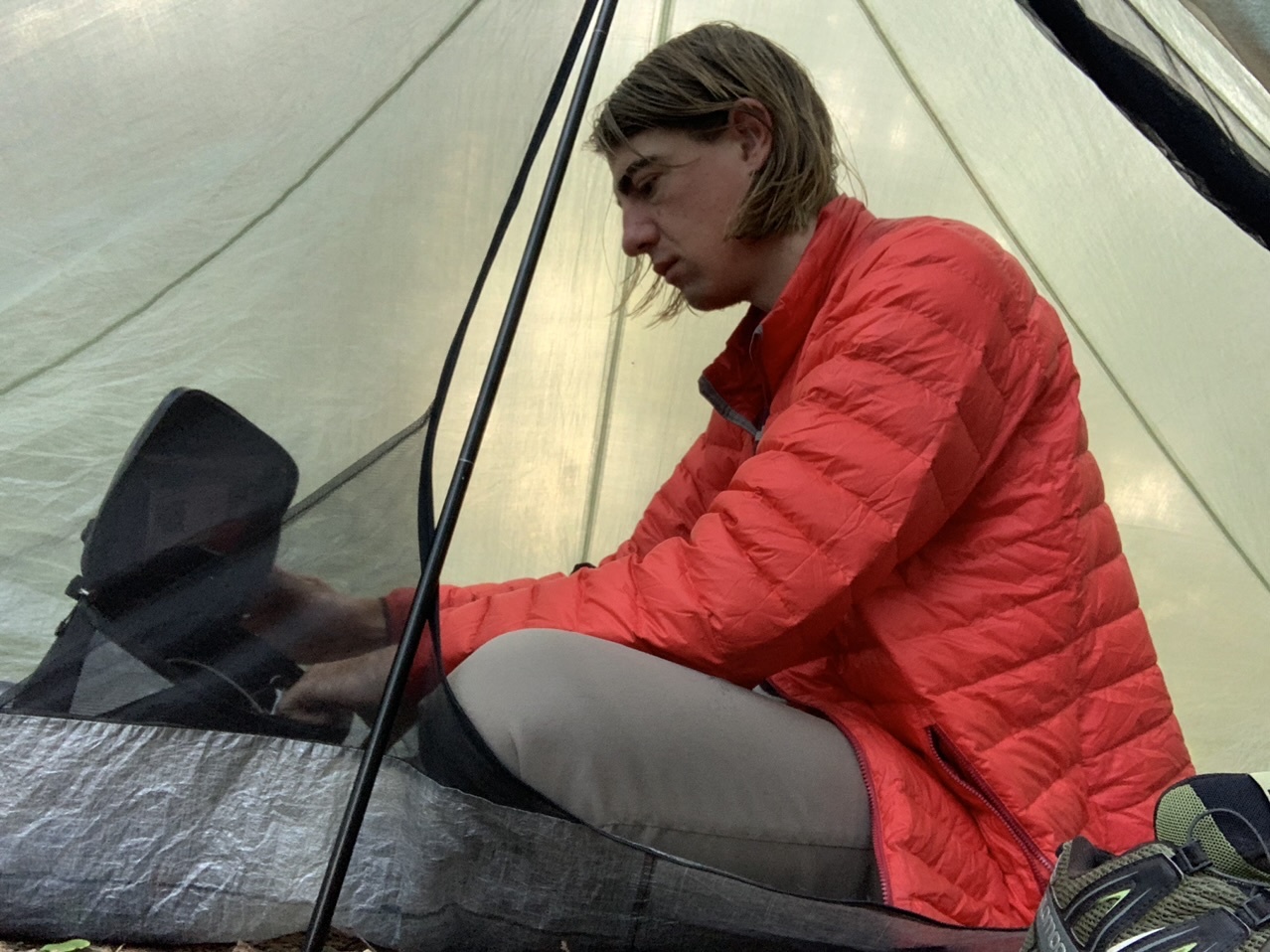
Sleeping Pad & Pillow
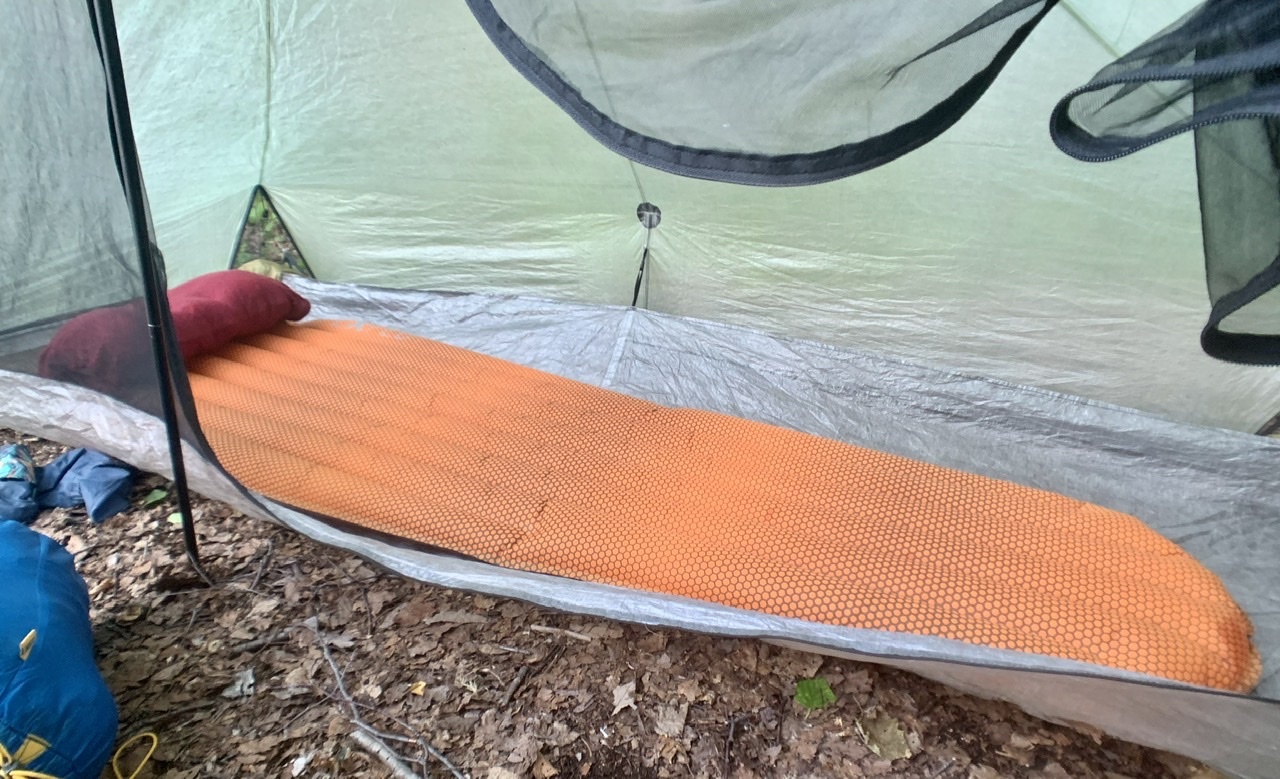
Sleep is really important to me—it’s the best performance-enhancing drug you can get, and the sleep tracking I’ve done over the past year confirms that. So I’m willing to spend extra money and weight on something that helps me sleep better than the self-inflating Thermarests I used to sleep on. I got an insulated inflatable mat from Exped (the SynMat UL long/wide), and it’s magical. I’m a side sleeper, so I like having something thicker to keep my hips off the ground. The Exped mats come with a clever stuff sack that doubles as a pouch to capture air to fill it with, so it only takes a minute or so to fill. I like it so much that I have two of them now—a summer one and a winter one.
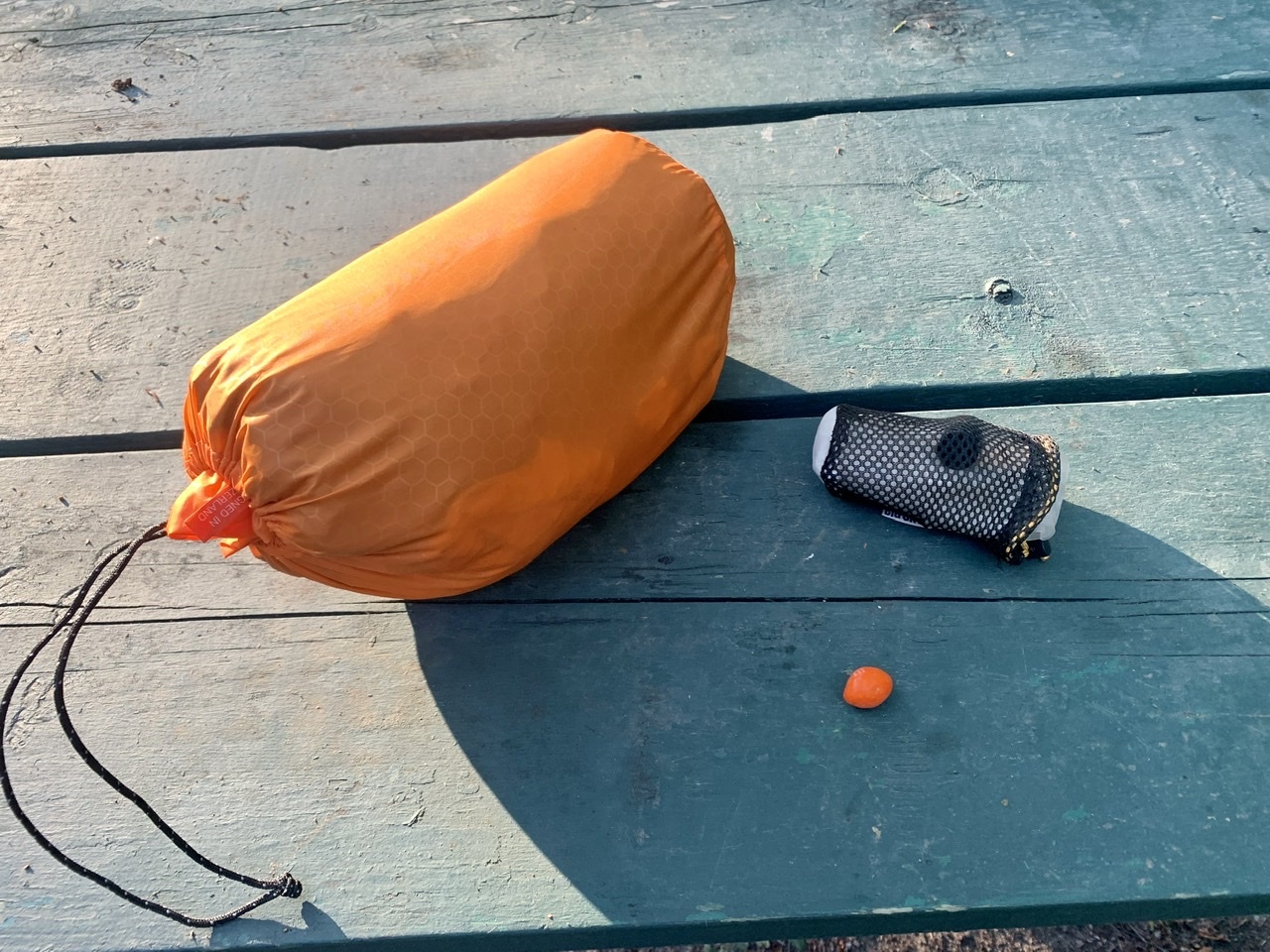
I also got an inflatable pillow from Big Sky Products that is wonderful. It packs down small, and has structure to it when inflated to keep your head from rolling off. I use my buff as a pillow case for it, and it’s way better than the stuff sack full of clothes I used to use that would compress down to nothing as the night went on.
Sleeping Bag
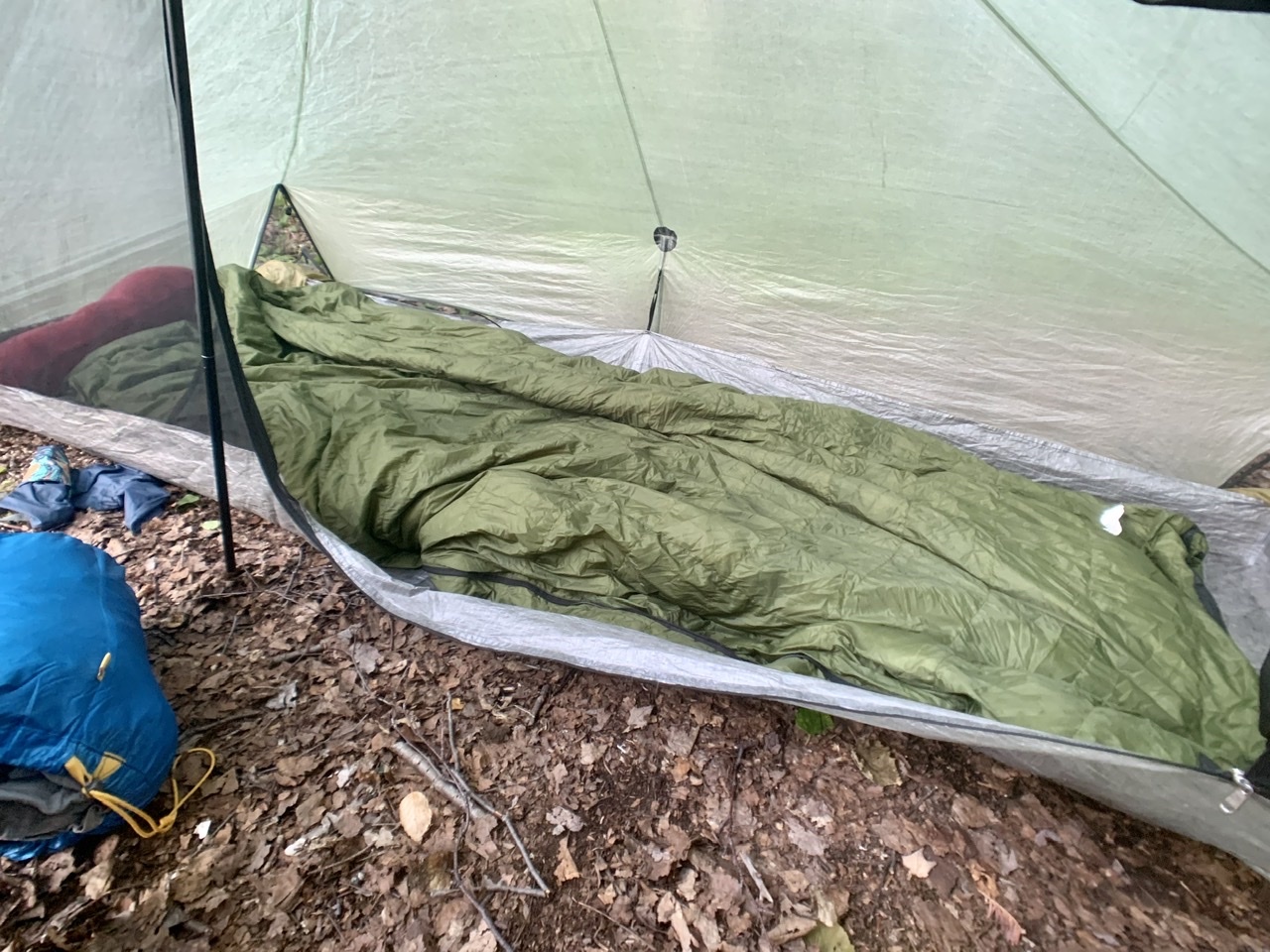
Instead of a sleeping bag I have a sleeping quilt. With most sleeping bags the insulation underneath you is wasted as your bodyweight compresses it too much for it to be useful. Quilts do away with that extra material and keep you warm by tucking under your sleeping pad instead. A couple shockcord straps keep it in place when you toss and turn. Mine zips up at the footbox if I need it, but most nights I leave it open like a duvet. I got mine from Feathered Friends because they have a reputation for manufacturing standards, and for using ethically-sourced down (as much as that is possible). It’s rated for 0º, but your milage will vary. I supplement it with my puffy jacket when it’s around 5º or lower.
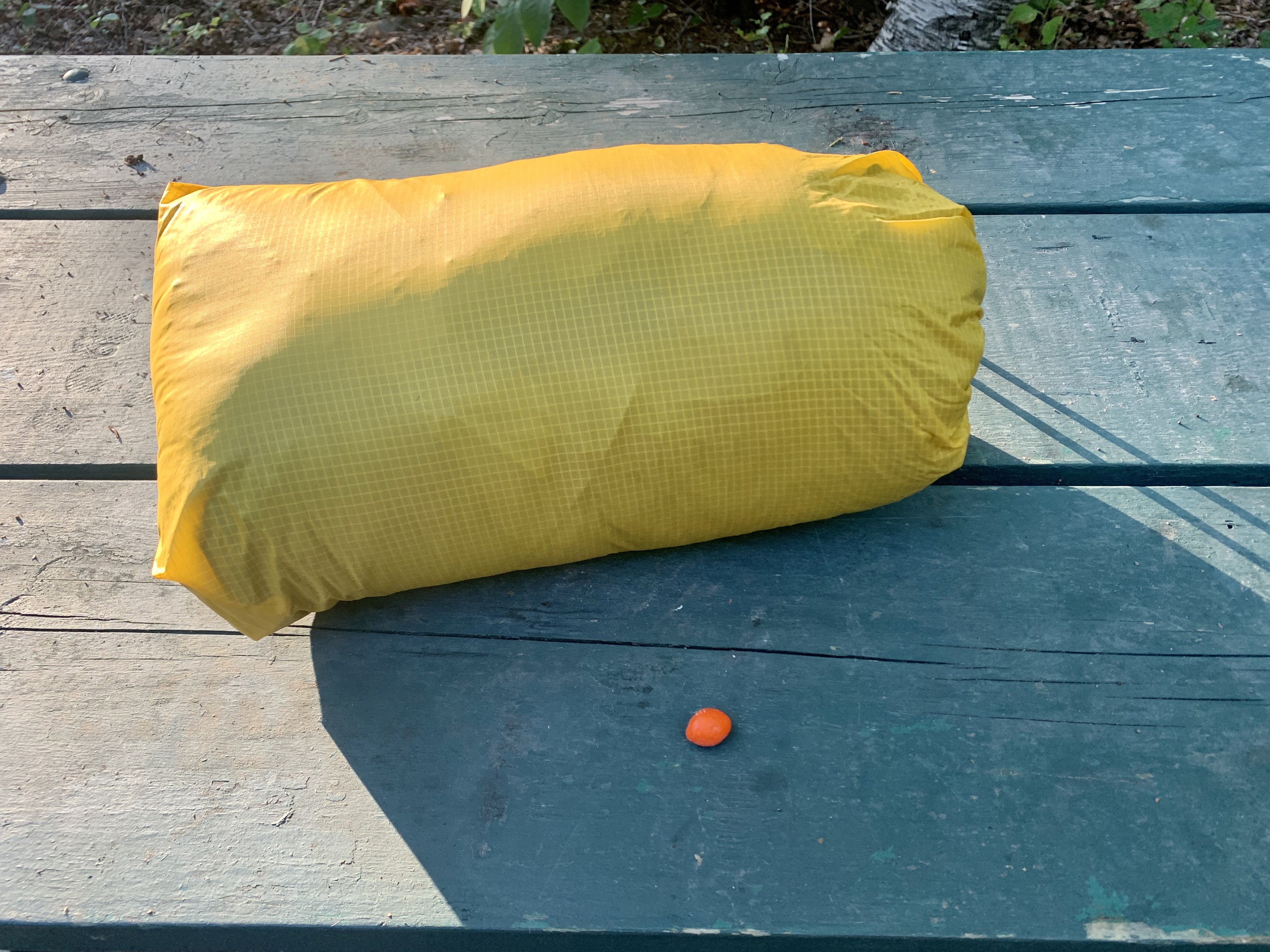
Cookset
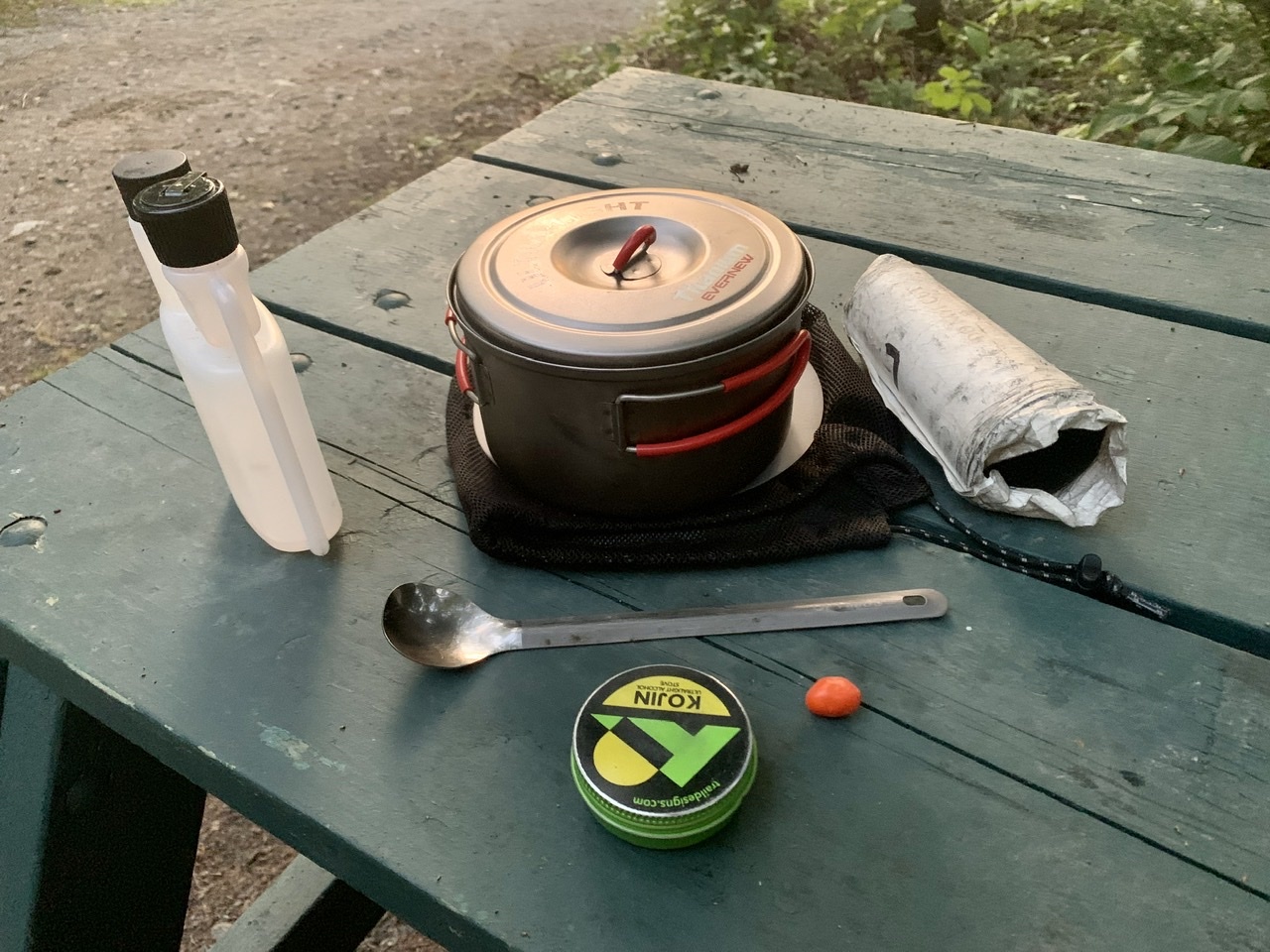
I ditched my white gas stove for an alcohol stove from Trail Designs that only weights a few grams. Alcohol doesn’t require a pressurized canister, so you can use any old water bottle to store it, though I use one with a measuring capsule built into it. The genius part of my cooking setup is the windscreen that is custom-sized for my pot (a 1.3l titanium pot from Evernew) to position it in the optimal height for heat transfer, and to seal in as much heat as possible.
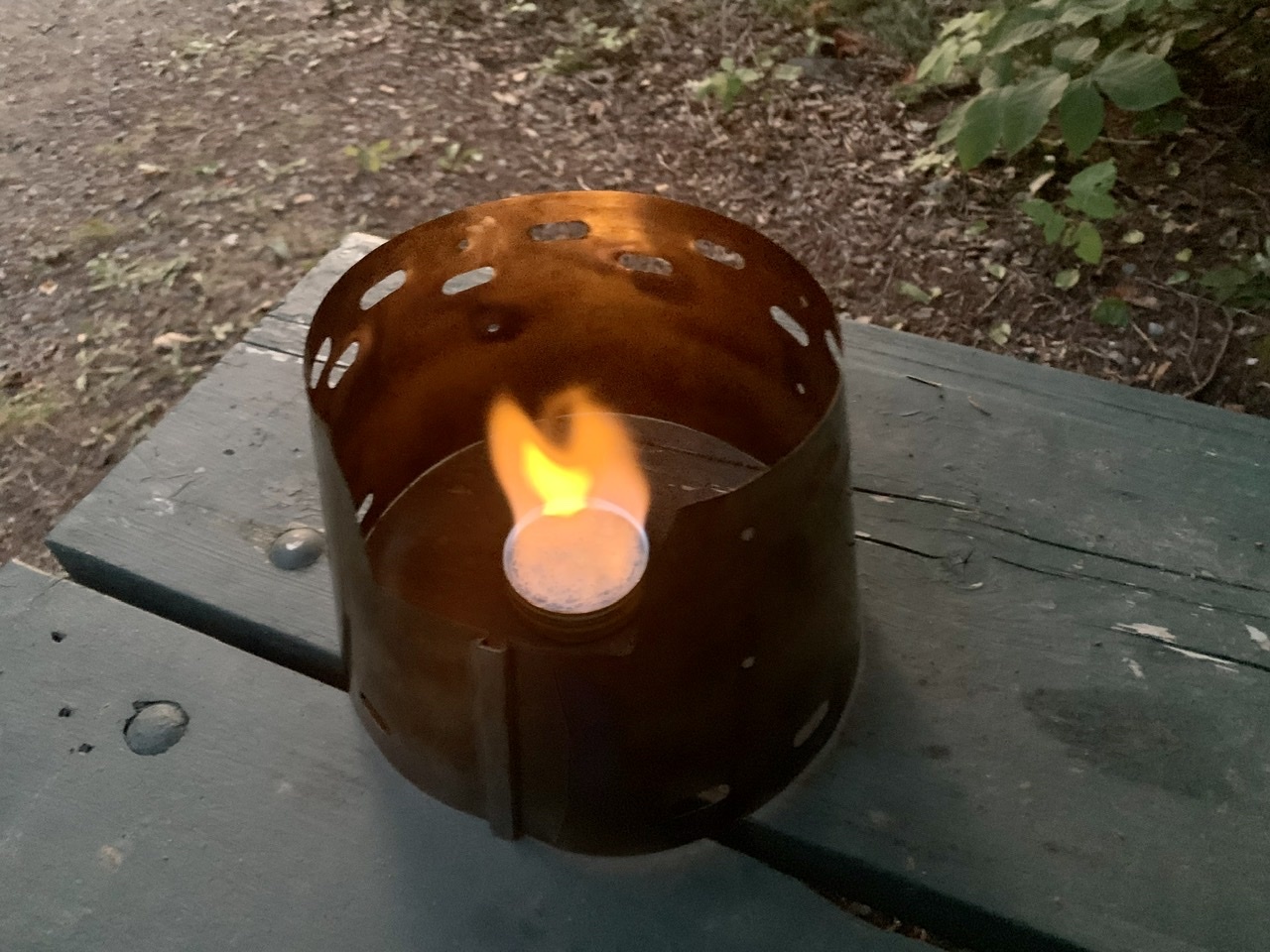
It doesn’t simmer, it only boils water, but I don’t mind as most meals I’m cooking only need boiling water. I also have a long-handled spoon so I can eat directly out of the package when I’m making freeze-dried camping meals or Sidekicks. Doing dishes is my least-favourite part of camping, so I’m happy to avoid that when I can.
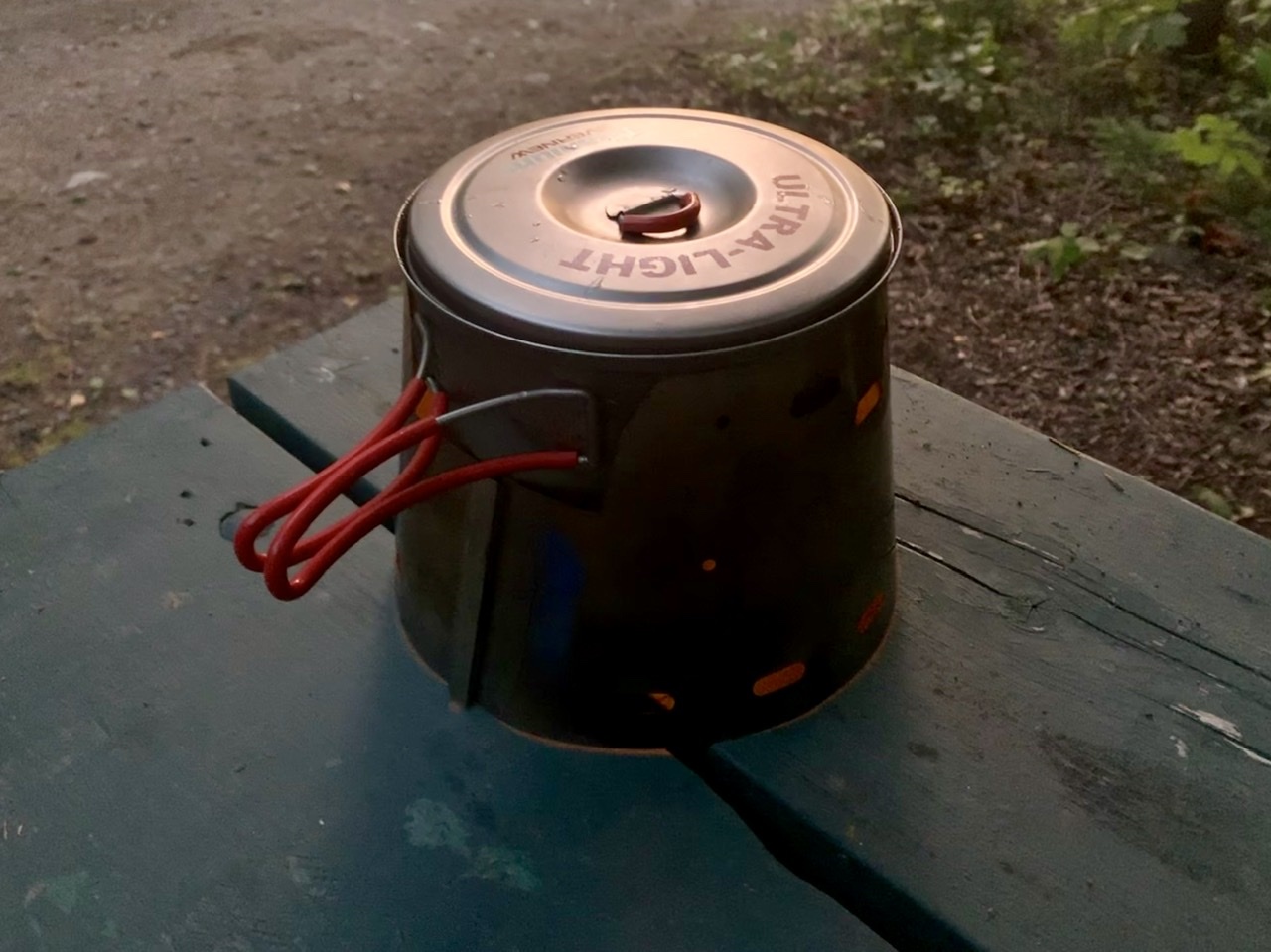
I’ll write more about my clothes and electronics in another post.